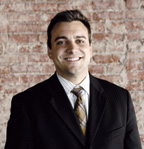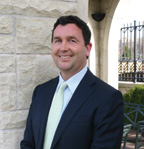
Robb Heineman, Sporting Kansas City
It’s funny, really, that a guy most Kansas Citians associate with professional soccer had essentially zero interest in the game just seven short years ago. Today, Robb Heineman is one of the most talked-about figures in the sport: He’s got a new office in the gleaming $200 million LiveStrong Sporting Park, built specifically for soccer; he oversaw a stadium naming-rights arrangement that turned the very concept of such deals inside-out, and he has redefined the term “fan experience” for every other professional sport. A Rainmaker, indeed, one whose out-of-the-penalty-box thinking was influenced by legendary figures in Kansas City business: Lamar Hunt, Neal Patterson and Cliff Illig. Credit Heineman for the vision to seize an opportunity when Major League Soccer compelled Hunt to sell the Kansas City Wizards back in 2006—but credit the Cerner Corp. co-founders and other investors behind what would become Sporting Kansas City, Heineman says. For it was they who allowed his vision to soar.
“This all got done through the respect that Neal and Cliff had for Lamar Hunt as the greatest sports entrepreneur of all time,” Heineman says. Maybe, but Heineman had a little something to do with it, as well. He has built a brand with a relentless embrace of the non-traditional—more than a few eyebrows arched in 2010 when the Wizards became Sporting Kansas City, and Sporting’s deal with Lance Armstrong’s LiveStrong Foundation this year made the club the first in pro sports to actually pay for naming rights. And yet, it’s all working. Proof? Sporting’s season ticket sales in the past year doubled from the 2010 level.
“One of the luxuries of having the partners we do have in this deal is that we’re taking the approach of trying to turn the sports business model on its head,” Heineman says. “But we still have an uphill fight with fan development, sponsor development and making this a profitable entity that rewards investors.”

Chase Simmons, Polsinelli Shughart
Chase Simmons just knew he wanted to become a litigator, wading into courtroom battle to dazzle jurors and judges and deliver a little justice. But trial lawyers spend a lot more time outside of court than in it, and Simmons found another venue for those same skills of persuasion: In the chambers of city councils and standing before municipal zoning boards. Result? His mug might be the most familiar face of real-estate development law in KC these days. Simmons has been on a streak of prominent developmental deals, drawing on his expertise in public financing. When tax money is involved, the projects tend to be big-ticket. Simmons’ name surfaced in recent reports about the long-festering West Edge project abutting the Country Club Plaza, but it’s a project that his team at Polsinelli Shughart has also been working on for 2 years.
They’re tackling the tax-increment financing portion of the project, now getting back on track after years of inactivity. More than a project, the site will become the new headquarters for his firm. But the task has also been a valuable compass for his work, he said. “It was like a lot of other projects, you look at it and think, ‘Boy, this is never going to work.’ The thing that always helped me and my team get through it is focusing on what’s the goal, not having any preconceived notions about how you get there.”
Successful people in business, he said, realize that the world is moving so fast, with so much uncertainty, that if you try to use a template for every solution, you’ll be very disappointed. Also framing his world view is the idea that, especially with public funds involved, stewardship matters. “I think about this a lot,” he said. “We only want to work on things we can be proud of, something that will have social utility and economic value.” You don’t always get to pick your clients in law, he said, but within his specialty, there’s freedom to decide which projects the firm lends its name to. ‘When I sit down with policy-makers, with city staff, I’m always hunting for three things,” he says: “One, are you accomplishing a priority as a city? Two, do you really need government assistance? And three, are you doing it in a way that reduces the risk to the government and the taxpayer and the unintended consequences? If you hit all three, you usually can make a good case that it’s a good product and one that will wear pretty well.”